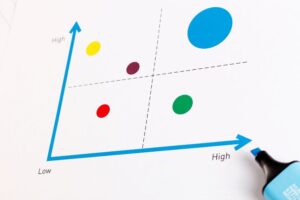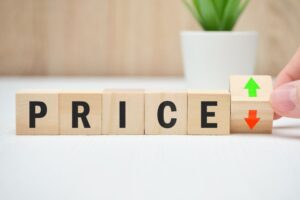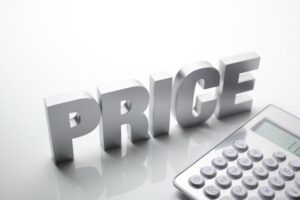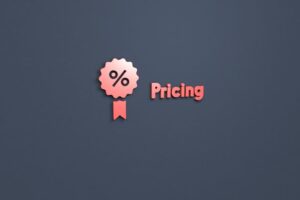Dynamic Pricing Definition
Dynamic pricing is sometimes known as surge pricing or time-based pricing. It is a pricing technique in which businesses set flexible product or service prices based on current market demand.
This pricing strategy enables firms to adjust prices in real-time or over short periods, typically in reaction to changes in supply and demand, competitor pricing, and consumer behavior.
Dynamic pricing is used in various industries, including transportation, electricity, retail, entertainment, and hospitality.
It runs on the principle of demand and supply, where prices rise when demand for a product is great and supply is limited. When demand is low, businesses drop prices to attract more customers.
Unsurprisingly, 21% of e-commerce enterprises in North America and Europe already employed dynamic pricing strategy in 2021, with 17% more ready to follow suit.

Types of Dynamic Pricing
There are three types of dynamic pricing, they are:
- Time-based pricing,
- Segmented pricing,
- Peak pricing.
Time-Based Pricing
Time-based pricing is a strategy where prices change depending on when a product or service is purchased or used.
This pricing technique is most effective in industries where demand varies significantly at different times. Seasons, days of the week, and even hours of the day can all impact time-based pricing.
Cloud computing services like Amazon Web Services (AWS) and Microsoft Azure often employ time-based pricing models.
They charge their customers based on usage metrics such as the amount of computing power or storage used and the time when these resources are consumed.
AWS, for example, has pricing models that make it cheaper to use certain services during off-peak hours.
Businesses can save money by scheduling non-urgent tasks during these cheaper time windows.
Segmented Pricing
Segmented pricing is when you charge different prices for the same thing depending on who is buying it. This plan is all about knowing that different types of customers react differently to prices.
You can segment the market by using age, location, membership status, or purchase history. This lets businesses make the most revenue by setting the right prices for each group.
Project management tools like Trello and Asana use segmented pricing strategies by offering different subscription options for different types of users, like individuals, small teams, and big companies. Each tier has different features and capabilities, meeting each group’s specific needs and budget limits.
For instance, there could be a simple free option for individuals, a middle tier with extra features for small teams, and a top tier for large organizations that offer advanced functionalities and support.
Peak Pricing
Prices are increased during times of high demand in peak pricing. Businesses use this strategy when they have a low product supply that cannot be quickly increased to meet the sudden increase in demand.
Peak pricing is not as common in regular SaaS models but can be seen in e-commerce platforms, especially during busy times like Black Friday sales.
Peak pricing is frequently used by transportation and hospitality companies. Prices rise when demand rises during a particular month or season.
Best Practices for Dynamic Pricing Strategy
Understand Your Market and Customer Base
Conduct a detailed analysis to understand your market better. Find out what your competitors charge and how your customers respond to price changes.
Determining who your customers are and how much they care about prices is also essential. This will help you customize your pricing strategy for different groups.
Use Data Effectively
Use data analytics tools to collect information on how customers behave, what trends are happening in the market, and patterns in demand. This data is vital in making informed pricing decisions.
Implement systems to monitor market conditions in real-time so you can make quick price changes.
Implement Technology and Automation
Use sophisticated pricing software to automate pricing based on pre-defined rules and real-time data.
Consider tools that can predict market trends and continuously optimize pricing strategies.
Maintain Transparency with Customers
Be transparent and truthful about your pricing structure. Customers are more accepting of dynamic pricing if they understand the reasons behind price changes.
Ensure that your pricing strategy is fair and does not exploit customers to avoid distrust and your brand reputation harm.
Pros of Dynamic Pricing
1. Revenue Maximization
Dynamic pricing enables businesses to adjust prices in real-time to capitalize on periods of high demand. Companies can significantly increase their revenue by charging more during peak times.
Example: Airlines frequently use dynamic pricing to raise ticket prices during peak travel seasons or for last-minute bookings. This strategy allows them to maximize revenue from each seat on a flight.
2. Improved Resource Utilization
Dynamic pricing strategy aids in the management of perishable inventory or limited resources. Businesses can reduce waste and optimize available resources by adjusting prices based on demand.
Example: Hotels frequently adjust room rates based on occupancy and anticipated demand. They can charge higher rates during peak tourist seasons to ensure they get the most value out of each room.
3. Market Condition Sensitive
Dynamic pricing enables businesses to respond quickly to market changes such as competitor pricing strategies, changes in consumer demand, or supply chain fluctuations.
Example: E-commerce platforms such as Amazon frequently adjust their prices in response to competitor prices, changes in supply and demand, and other market factors, ensuring that they remain competitive and relevant.
4. Targeted Customer Segmentation
Businesses can more effectively target different customer segments with dynamic pricing by offering prices that appeal to each group’s willingness to pay.
Example: Software companies frequently use tiered pricing models to cater to various customer segments ranging from individual users to large enterprises.
Cons of Dynamic Pricing
1. Customer Dissatisfaction and Loss of Trust
Price fluctuations that are frequent and significant can cause customer dissatisfaction. Customers may believe they are being overcharged or lose trust in the brand if the pricing strategy is perceived as exploitative or inconsistent.
2. Complexity and Resource Intensity
Implementing a dynamic pricing strategy can be difficult and time-consuming. It necessitates sophisticated data analytics tools, ongoing market monitoring, and a thorough understanding of customer behavior.
3. Potential Brand Reputation Damage
If not properly managed, dynamic pricing can harm a company’s reputation. Customers may perceive the brand as opportunistic or greedy, especially if they believe a company exploits certain situations (such as emergencies) to raise prices.
4. Risk of Price Wars
Dynamic pricing in competitive markets can lead to continuous price undercutting among competitors, potentially resulting in a race to the bottom with eroded profit margins.
MORE: What is competitive pricing and how is it used?
Is Dynamic Pricing Best for My Business?
Deciding if dynamic pricing is a good strategy for your business involves looking at different factors like your market, customers, base, and product.
Dynamic pricing works well for products or services like airline tickets, hotel bookings, or tickets to live events. These products or services have changing demand and aren’t always easy to find.
However, it will be less effective for products with stable demand or essential items where customer backlash against variable pricing could be significant. For instance, fluctuating prices for essential commodities like bread or milk would likely be poorly received.
It’s essential to match dynamic pricing with your business goals and objectives. If maximizing revenue during peak demand periods is crucial for your business, dynamic pricing could be highly beneficial. However, it is important to think about how this will affect your relationship with customers and their loyalty to your brand in the long run.
Check our SaaS pricing reviews and details about SaaS tools on our SaaSGenius pricing website.
Related Posts
Frequently Asked Questions (FAQ)
Author
Methodology
- Who?
We are SaaS experts: Our specialists constantly seek the most relevant information to help support your SaaS business. - Why?
We are passionate about users accessing fair SaaS pricing: We offer up-to-date pricing data, reviews, new tools, blogs and research to help you make informed SaaS pricing decisions. - How?
With accurate information: Our website manager tests each software to add a Genius Score using our rating methodology to each product. Our editorial team fact-check every piece of content we publish, and we use first-hand testing, value metrics and leading market data.










